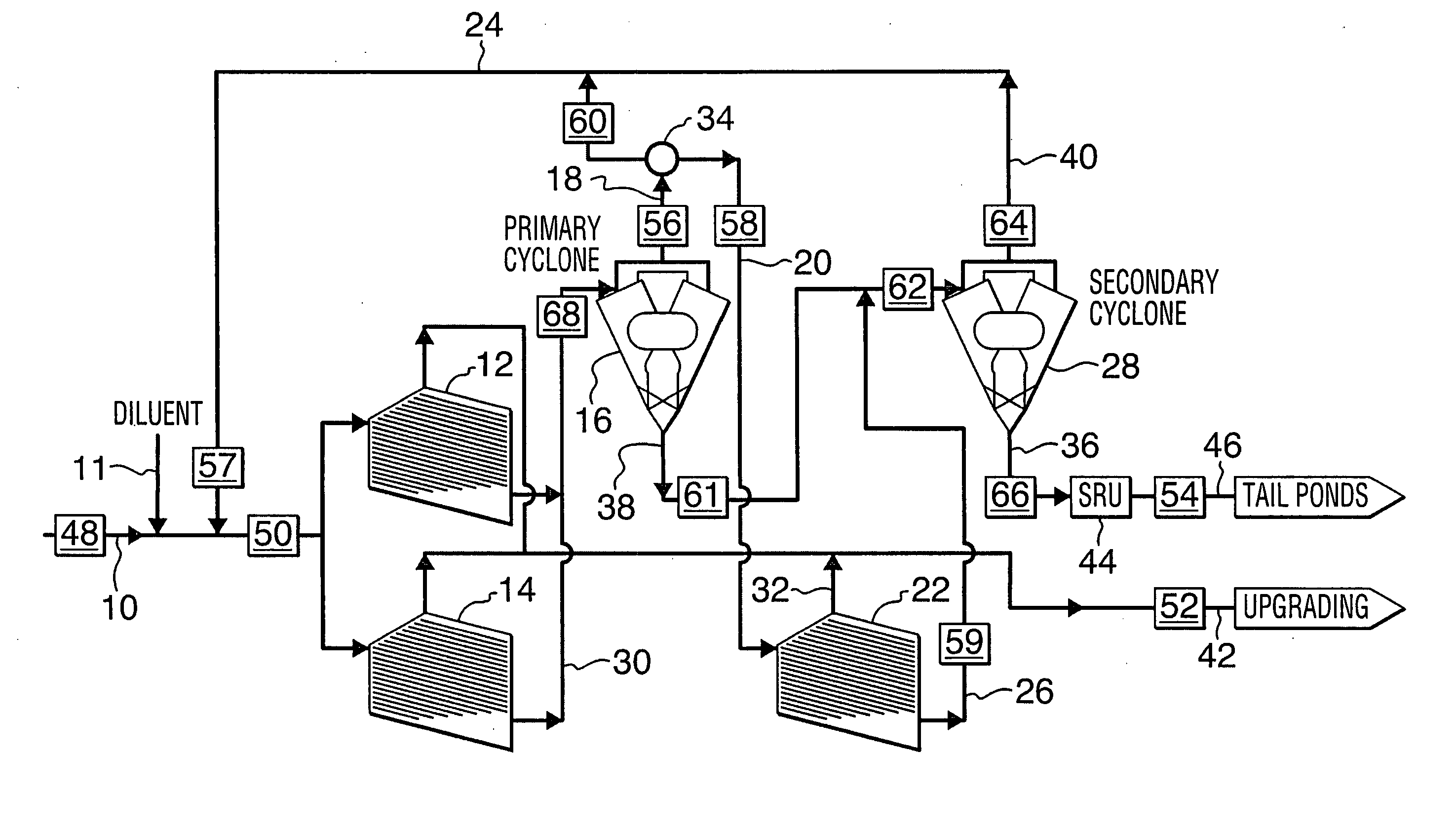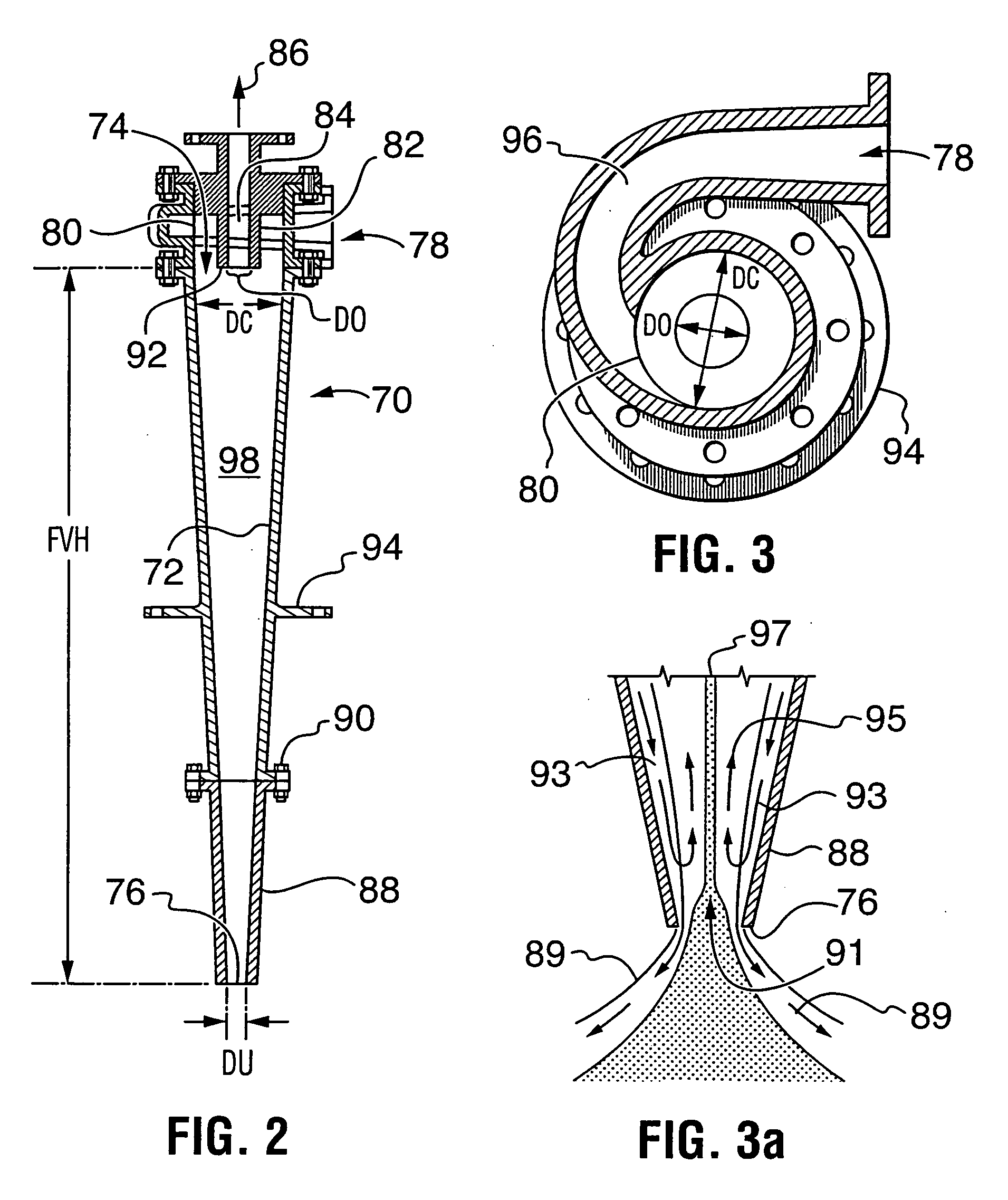Bituminous froth hydrocarbon cyclone
a hydrocarbon cyclone and bitumen technology, applied in the field of bitumen recovery from oil sand, can solve the problems of high maintenance cost, poor bitumen separation, and high capital and operating cost of centrifuge units, and achieve enhanced overflow stream, poor bitumen separation, and enhanced overflow stream
- Summary
- Abstract
- Description
- Claims
- Application Information
AI Technical Summary
Benefits of technology
Problems solved by technology
Method used
Image
Examples
Embodiment Construction
[0038]FIG. 1 is a schematic diagram depicting the arrangement of apparatus adapted to carry out the process of the invention. The schematic diagram provides an outline of the equipment and the process flows, but does not include details, such as pumps, that provide the ability to transport the process fluids from one unit to the next. The apparatus of the invention includes inclined plate separator (IPS) stage units and cyclone stage units, each of which process an input stream to produce an overflow output stream, and an underflow output stream. The IPS overflow output stream has a bitumen enriched content resulting from a corresponding decrease in solids, fines and water content relative to the bitumen content of the IPS input stream. The IPS underflow output stream has solids, fines and water with a depleted bitumen content relative to the IPS input stream. The IPS underflow output stream may be referred to as a bitumen depleted stream. The cyclone stage overflow output stream ha...
PUM
| Property | Measurement | Unit |
|---|---|---|
| Length | aaaaa | aaaaa |
| Length | aaaaa | aaaaa |
| Fraction | aaaaa | aaaaa |
Abstract
Description
Claims
Application Information
 Login to View More
Login to View More - R&D
- Intellectual Property
- Life Sciences
- Materials
- Tech Scout
- Unparalleled Data Quality
- Higher Quality Content
- 60% Fewer Hallucinations
Browse by: Latest US Patents, China's latest patents, Technical Efficacy Thesaurus, Application Domain, Technology Topic, Popular Technical Reports.
© 2025 PatSnap. All rights reserved.Legal|Privacy policy|Modern Slavery Act Transparency Statement|Sitemap|About US| Contact US: help@patsnap.com



